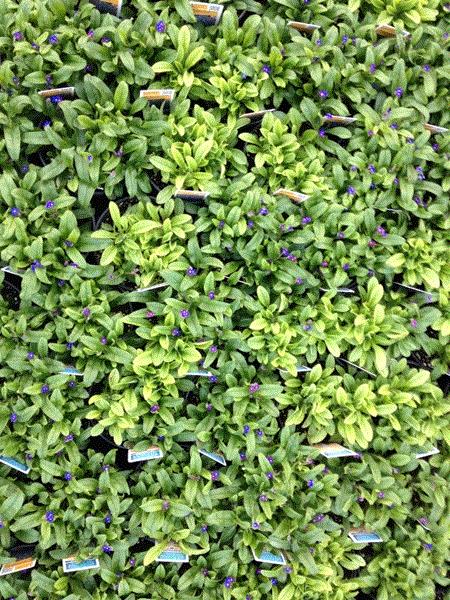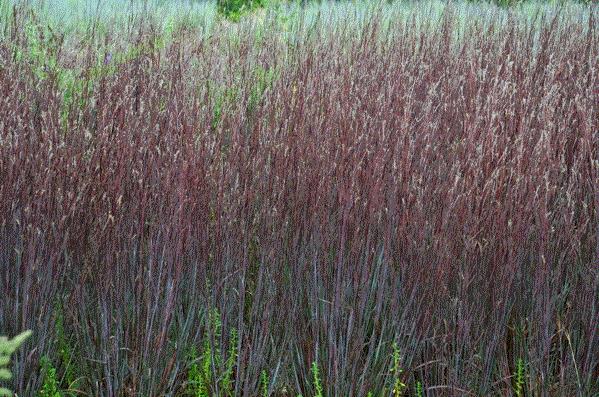Smart Aqua Meter
When I became a grower over 20 years ago, I never imagined that I'd someday have the ability to monitor the nutritional status of my crops using my cell phone (yes there were cell phones back then). Fast forward a couple of decades and let me introduce you to SAM-1 (Smart Aqua Meter).

The SAM-1 Smart Aqua Meter from Sensorex turns smartphones or tablets into convenient and useful tools. The SAM-1 can be used to monitor pH or conductivity of media, water or fertilizer solutions at greenhouses and nurseries. Simply connect the sensor in the audio jack and you're ready to take readings. Unfortunately, this is not a combination meter and there are separate sensors for pH and EC. There are lots of cool extras - such as time and date stamping the samples, GPS coordinates, the ability to share measurements via email and to import the measurements into spreadsheets allowing you to observe the trends over time.
Click here to see the SAM-1 brochure and be sure to check out this short product video.
pH of Perennials
I'm often asked, "What's the ideal pH for perennials?" While each specific perennial will have its own range of optimal pHs, most of them will grow well when provided slightly acidic growing conditions with the pH in the range of 5.8 to 6.4. Producing them within these ranges allows for the greatest availability of all essential nutrients, especially the micronutrients.

Interveinal Chlorosis on myosotis
There are a handful of perennials, such as vinca, which prefer to be grown at lower pH levels (6.0 or lower). These plants are inefficient at taking up iron under elevated pH conditions and often develop iron deficiency symptoms.
Iron deficiency appears as interveinal chlorosis on the young leaves that can progress over the entire plant. Severe cases cause the young leaves to appear bleached (white) then turn necrotic and death of the growing terminal growth (shoot tips) may also result.
What About Raising the pH?
On occasion, the pH may fall below the optimal ranges and may need to be increased in order to grow healthy crops. Growing crops with low pH increases the availability of micronutrients and increases the likelihood of toxicity symptoms developing (typically observed on the lower leaves as necrotic spots, stippling and/or marginal burn).
When the pH levels are just a little off, they can be corrected by stopping the acidification and shifting to nitrate-based fertilizers (basic). In more severe cases, it may be necessary to drench the soil with either flowable lime or potassium bicarbonate.
Flowable lime has been more predictable and has a stable effect on the pH without increasing the EC of the growing mix. Lime particles can be abrasive on the injection equipment, therefore, clean the injectors after application. Flowable lime can also plug up drippers and irrigation emitters. A good go-to rate is to drench using 4 qt. per 100 gal. (1 0mL/Liter).
Potassium bicarbonate is more soluble and can be applied through drip irrigation systems. This application will increase the EC; it's generally recommended to apply a basic fertilizer with moderate leaching one day after the application to wash out the excessive salts and to reestablish the nutrient balance. A typical application rate for potassium bicarbonate is 2 lbs. per 100 gal. (2.4 grams/Liter)
To avoid residue and decrease phytotoxicity with either flowable lime or potassium bicarbonate, avoid getting the leaves wet during the application and rinse off the foliage off after the application. It may take more than one application to correct the pH.
CalOx

There is one more option for raising media pH, which BioSafe Systems recently introduced. The product is called CalOx. With its micronized calcium carbonate, CalOx is an improvement over other liquid lime options. It quickly raises media pH, is easily absorbed into the plant, provides a readily available source of calcium and doesn't plug up drip lines. CalOx can also be applied as a foliar spray to correct calcium deficiencies. CalOx comes in micronized liquid and wettable powder forms. Click here to learn more about CalOx.
PW 2016-17 Perennial Introductions
Each year the Proven Winners perennial program gets a little more diversified. This year is no exception, as there are 16 new introductions slated for the 2016-17 season. Here are a few from breeder Hans Hansen I'm looking forward to trialing in my own landscape.
Dianthus Paint the Town Fuchsia

This new dianthus has several great characteristics. Not only does it brighten up the landscape with its bright fuchsia flowers, but Paint the Town Fuchsia has incredibly dark glaucous blue foliage, which adds to its garden appeal. It's one of the earliest dianthus to flower, performs well in areas with heat and humidity and is hardy to Zone 4. Paint the Town Fuchsia will be a great addition to the PW program.
Heuchera PRIMO Black Pearl

Primo Black Pearl is a game changer. This Heuchera villosa hybrid has the blackest leaves I've seen and impressively holds the intense black coloration in full sun. Primo Black Pearl is super vigorous and will quickly fill out a gallon container, yet it maintains an attractive, dense habit (the foliage grows 8 to 10 in. high and 18 to 20 in. across). It displays white flowers with pink calyxes in the midsummer, but the characteristics of the foliage is what steals the show. Hardy to Zone 4.
Schizachyrium Prairie Winds Blue Paradise

Native grasses are trending and Schizachyrium Prairie Winds Blue Paradise would make an excellent addition to any ornamental grass program. This plant has a great upright and columnar habit growing just 3.5 ft. tall. Blue Paradise has striking silver-blue stems in the summer, which transitions to an impressive deep wine color in the fall. This native grass is tough and will thrive in hot, dry areas where other plants struggle to survive. With its striking appearance, toughness and Zone 3 hardiness, Prairie Winds Blue Paradise is the perfect backdrop for landscapes across much of the country.
Tradescantia Charlotte's Web

Hans Hansen must have seen Charlotte's message, "Some Plant!" when he selected this one. The chartreuse foliage transitions to gold with more sun exposure. It's not as yellow as other cultivars, but Charlotte's Web doesn't burn in the sun, which makes this plant "Terrific." Small, three-petaled, soft blue flowers cover the arching, bushy habit in the early summer. The blooms combined with the eye-catching foliage give Charlotte's Web a "Radiant" appearance. With hardiness to Zone 5 and more reliable landscape performance, this is one "Humble" plant.
Thanks, Hans, for all the great perennials and for giving me a storyline.
These new Proven Winners perennial introductions will be available in 72-cell liners this summer and the in the Spring of 2017 as larger sized liners and bareroot. Customers can book their orders now.
NJ Plants
On February 24th and 24th, NJ Plants, aka New Jersey Plants Show, will be held in Edison, New Jersey. This event showcases some of the region's leading horticultural and landscape experts. It's geared for landscape contractors and designers, garden centers, nurseries and groundskeepers. There are a number of educational seminars covering an array of topics including IPM trends, outdoor spaces, the value of what we do as an industry, nutrient management, water quality considerations and more.
There are even a few perennial topics on the docket:
-
Susan Cohan (Susan Cohan Gardens) - "Lessons From the Road: The Value of Visiting Gardens"
-
Ed Kiley (The Perennial Farm) - "Deerleerious Plants: Beautiful Plants Deer Don't Like to Eat"
-
Tobiah Horton (Rutgers University) - "Rain Gardens"
-
David Wilson (Overdevest Nurseries) - "Not Your Grandmother's Plants"
Click here to learn more about NJ Plants.
Sustainable Landscape Conference
UConn Extension will be hosting the Sustainable Landscape Conference - A Conference for the Landscape and Horticultural Professional (formerly the Perennial Plant Conference) on Thursday, March 17, 2016 on the University of Connecticut Storrs campus in Storrs, Connecticut.
The revamped program covers topics such as plant production, sustainable landscape design and retail marketing. Here are a couple of the presentations I thought might be of interest:
-
Roy Diblik (Northwind Perennial Farm) - "Perennial Plant Communities: The Know Maintenance Approach"
-
Angela Palmer (Plants Nouveau) - "Are You Prepared for the Cultural Shift? Marketing Plants to Future Generations"
Event information can be found on the Sustainable Landscape Conference website.
Landscape Plants with Personality
Before I sign off, I wanted to let you know about an upcoming FREE webinar.
Melissa Scherb (Woodlawns Landscape Company) and Jeff Gibson (Ball Horticultural Company) will co-present a great webinar titled, "Plants with Personality for Landscapers."
In this webinar, you’ll learn what various clients—the "tried-and-truer," the "low-maintenance requirer," the "water-wise worrier" and the "weird-and-wackys" - want in plants for their installations. If you’re a landscape professional, your job is to turn your client’s vision into reality. If you’re a grower, your job is to do it within your landscaper’s client’s budget and timeframe. This webinar answers both needs.
When: Thursday, February 18
Time: 1 p.m. EST/noon CST
Where: sign up at www.ballpublishing.com/webinars
If you’re a landscaper or you grow plants for landscapers, you don’t want to miss Ball Publishing’s next great webinar: "Plants with Personality for Landscapers."
And remember, it’s free!


I hope you enjoyed this week's newsletter. Feel free to contact me with comments, questions, topics for future newsletters or just to say hello.
Paul Pilon
Editor-at-Large
Perennial Pulse
This email was received by 42,625 readers!
If you're interested in advertising in Perennial Pulse, contact Kim Brown ASAP and she'll hook you up.